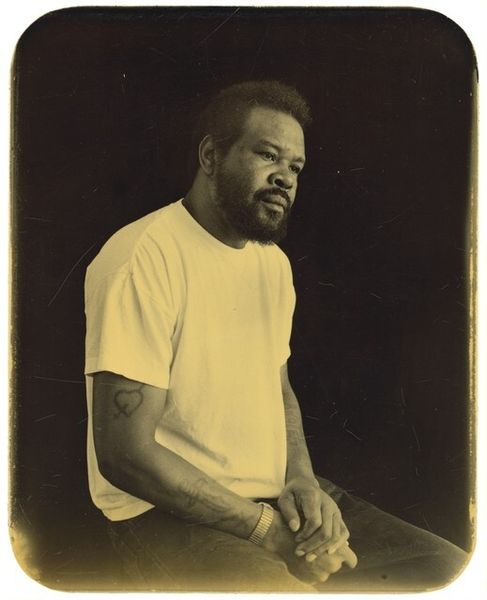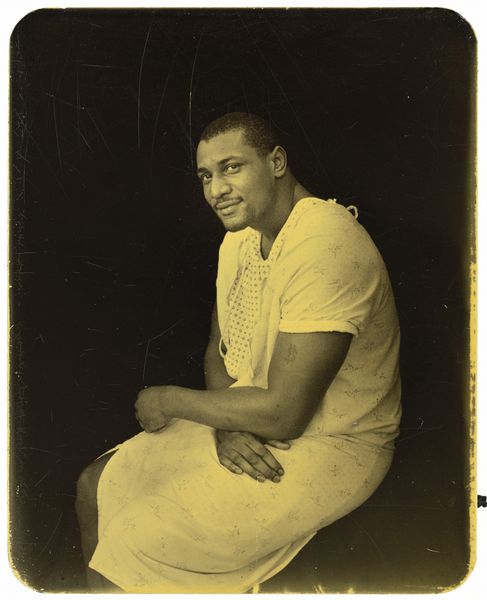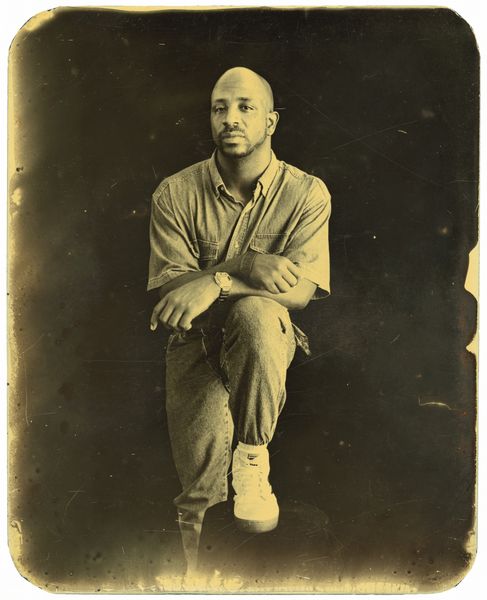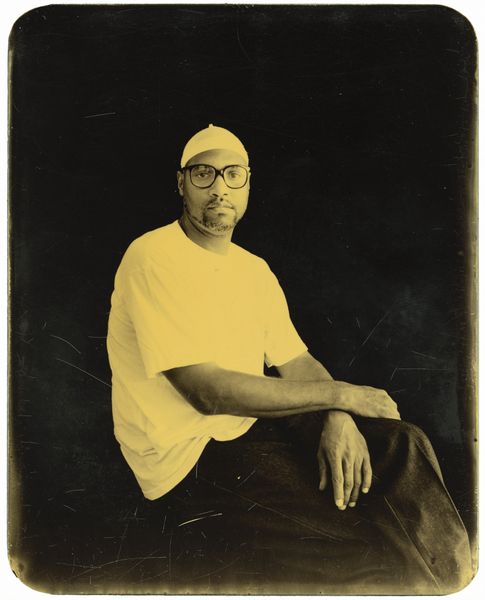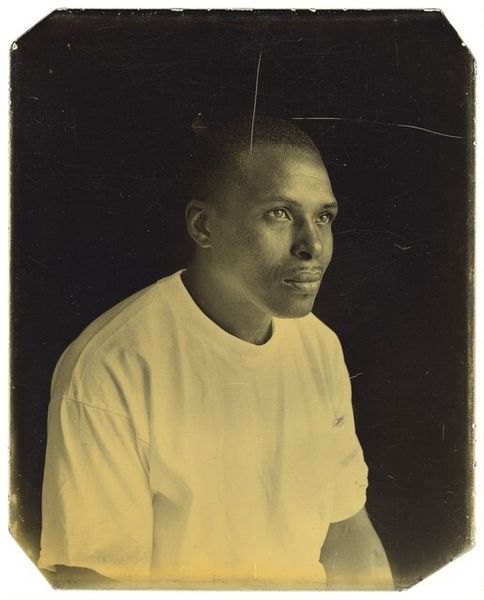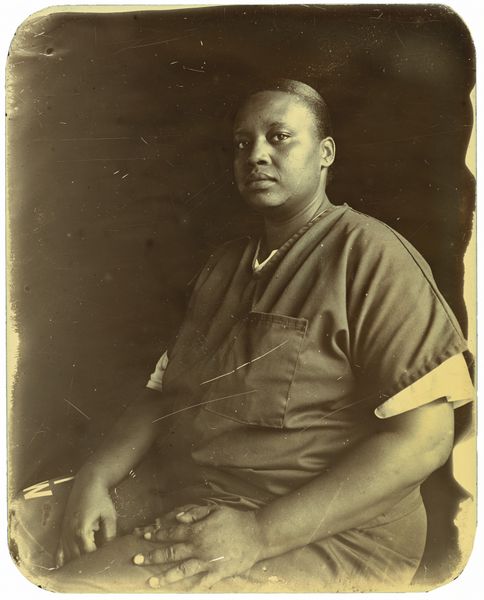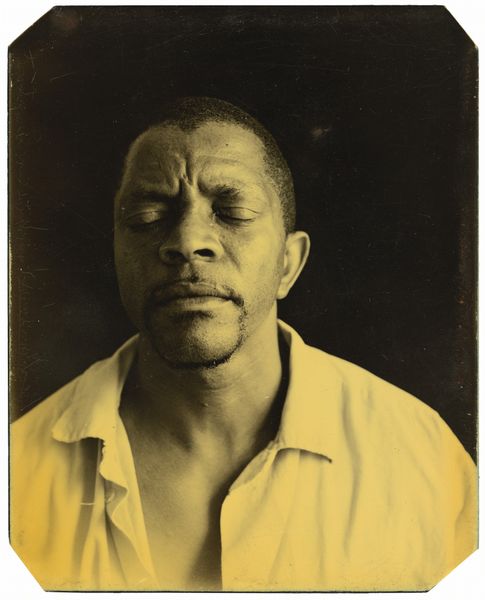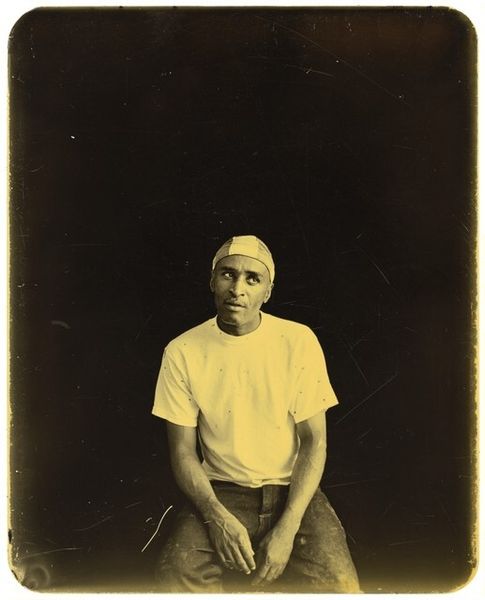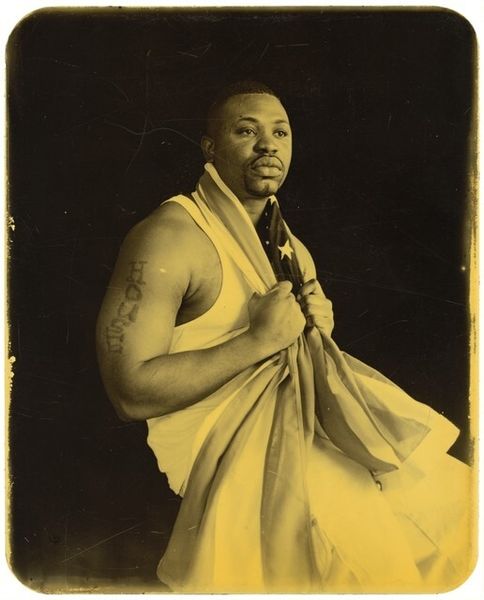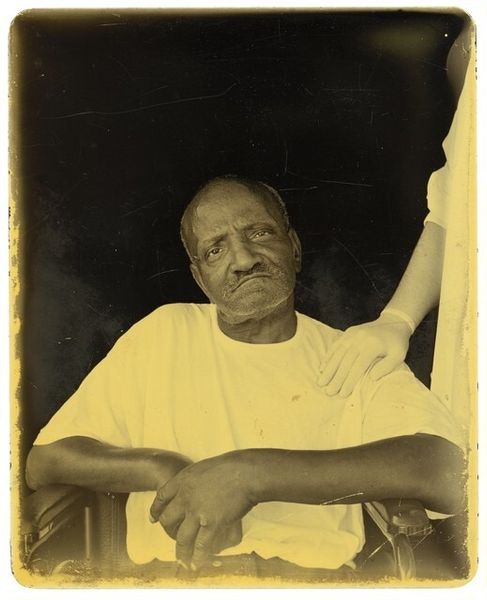
photography, gelatin-silver-print
#
portrait
#
contemporary
#
low key portrait
#
portrait image
#
social-realism
#
photography
#
portrait reference
#
portrait head and shoulder
#
gelatin-silver-print
#
portrait drawing
#
facial portrait
#
portrait art
#
fine art portrait
#
celebrity portrait
#
digital portrait
Dimensions: image/plate: 12.6 × 10.1 cm (4 15/16 × 4 in.)
Copyright: National Gallery of Art: CC0 1.0
Curator: This is Deborah Luster’s "Gary Galey, Angola, Louisiana," created sometime between 1998 and 1999. It's a gelatin-silver print, a potent example of her portraiture. Editor: There’s a stillness, an almost meditative quality to this image. The soft sepia tones create a dreamlike, historical feeling, despite the work being relatively recent. Curator: The gelatin-silver process allows for that striking tonal range, enhancing the emotional depth we see in Galey’s face. Note how Luster uses the technical aspects of photography to draw the viewer into his personal experience. Editor: Absolutely. And I think the subject being an inmate at Angola, a notorious Louisiana state penitentiary, profoundly impacts how the image resonates. Luster's work often delves into overlooked or marginalized communities. The stark backdrop removes any environmental context, compelling us to consider Galey, the man, not merely a prisoner within a larger penal system. Curator: The tight composition isolates Galey’s expression, and the question mark tattooed on his forehead amplifies the enigma and complexities within his persona. The photograph thus challenges conventions, prompting critical readings about guilt, justice, and representation within incarceration contexts. Editor: It is an undeniably potent combination of social realism with a kind of tender vulnerability that encourages empathy. I wonder how much the formal elements influenced public sentiment regarding prison reform at the time it was made. Curator: It would require more archival research to precisely ascertain that level of socio-political impact. Nonetheless, Luster's compositional rigor and command of tone generate affect—precisely the means through which images exert cultural and political agency. Editor: Well, it certainly sparks necessary dialogues concerning empathy and representation even today. Thank you for pointing out those key formal choices that invite such important interpretive and socially oriented debates. Curator: Indeed, a thoughtful inquiry regarding an artwork's construction can illuminate its broader significance and reception within various cultural contexts.
Comments
No comments
Be the first to comment and join the conversation on the ultimate creative platform.


